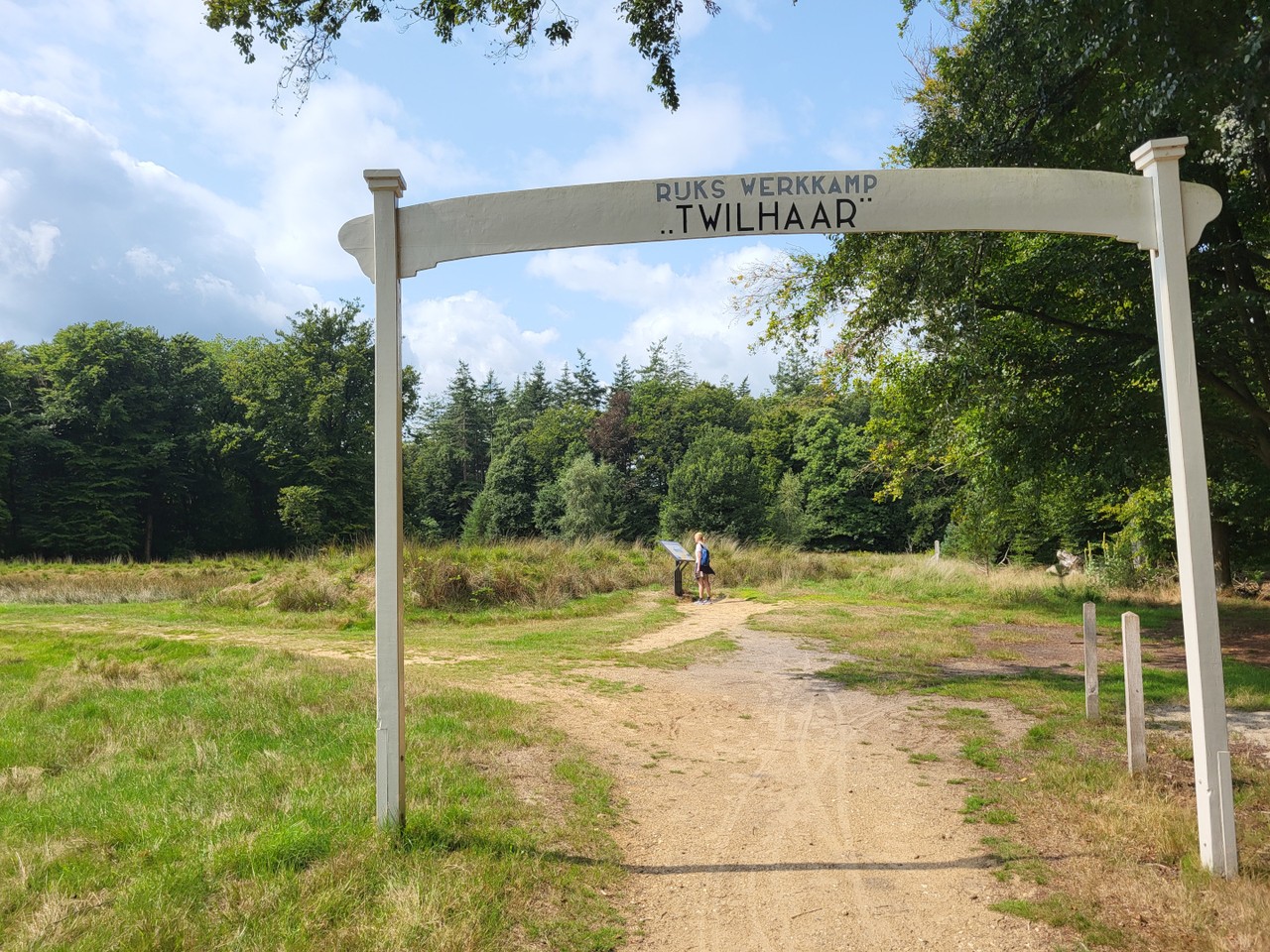Rijkswerkkamp Twilhaar was built in early 1940, just before the outbreak of World War II, by the Dutch National Employment Service (Rijksdienst voor Werkverruiming). Until 1941, around 100 unemployed fishermen from Scheveningen were put to work here. Armed with shovels, they were tasked with cultivating the heath and sandy soils to prepare the land for ‘De Plantage’ — a planned orchard near the Twilhaar farm. They worked under the supervision of staff from the Dutch Forestry Commission (Staatsbosbeheer). At Christmas in 1941, the unemployed fishermen were sent home and were not required to return. The German occupiers had decided to take over the camp for their own purposes.
Camp manager Hoijmann was transferred to the infamous Camp Erica near Ommen. There, he was threatened with consequences if he did not significantly tighten the camp regime. Aware that he was being watched by the German forces, Hoijmann complied with the orders — at least outwardly.
On 2 October 1942, the Jewish labourers were deported via Nijverdal train station to Westerbork. They were later sent to Auschwitz, where they were murdered. Around 1943, evacuees from the coastal Atlantikwall area were housed in the camp. Later still — following the bombing of Nijverdal on 22 March 1945 — evacuated residents of Nijverdal also found temporary shelter in the camp.
Thanks in part to the camp manager’s role in the resistance, the camp was also able to provide refuge to Jewish people in hiding. But it wasn’t only them who found temporary relief there. Throughout the war, various other groups also stayed at the Nijverdal camp for different reasons: German soldiers passing through, Canadian liberators used it as a base, and returning forced labourers who were given medical care before continuing their journey — often back to the Randstad region (Amsterdam metropolitan area and Rotterdam–The Hague metropolitan area).
Today there is a monument here to remember this former camp.
